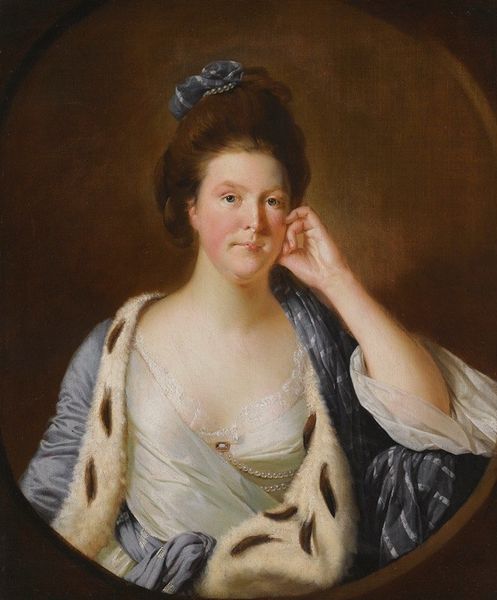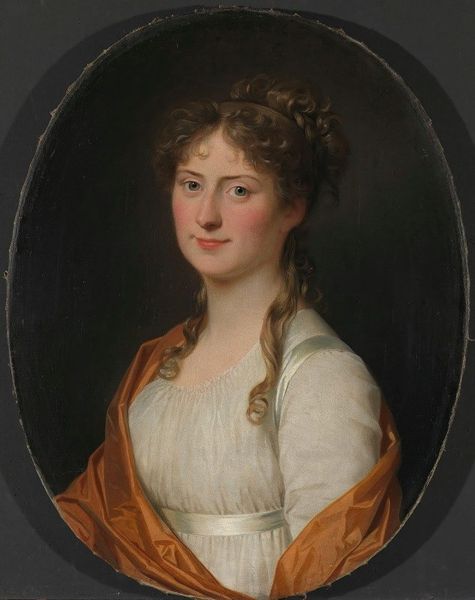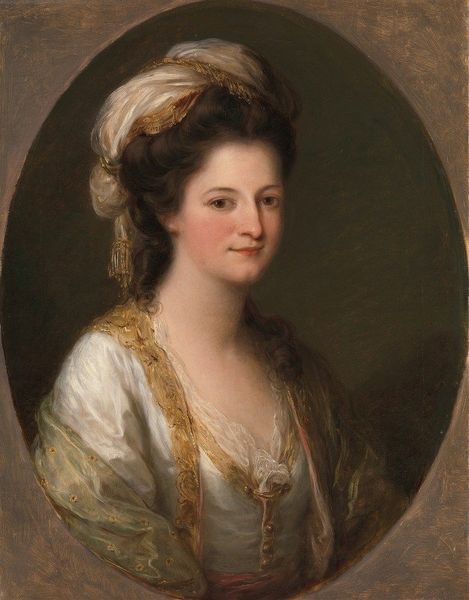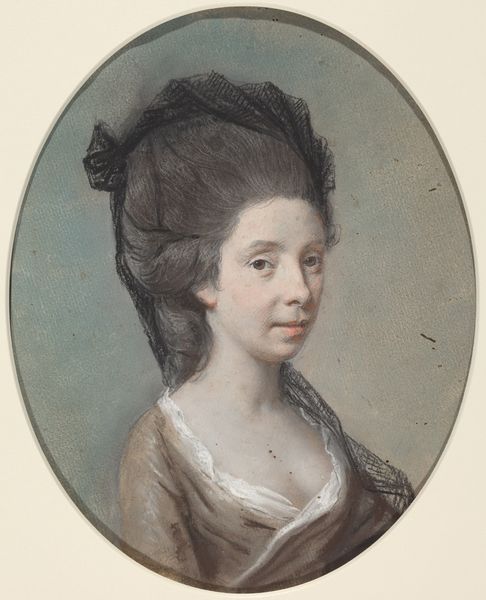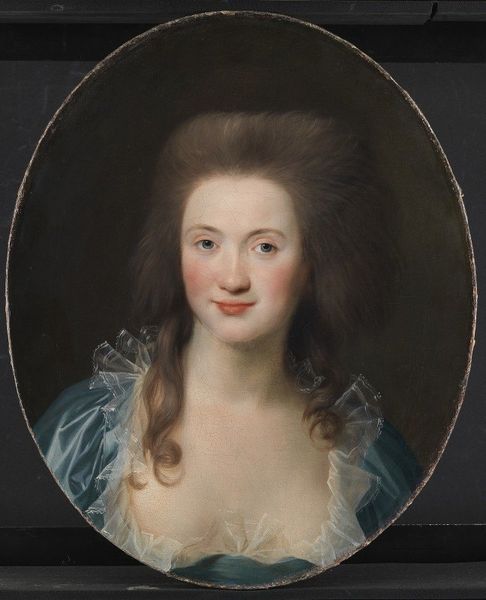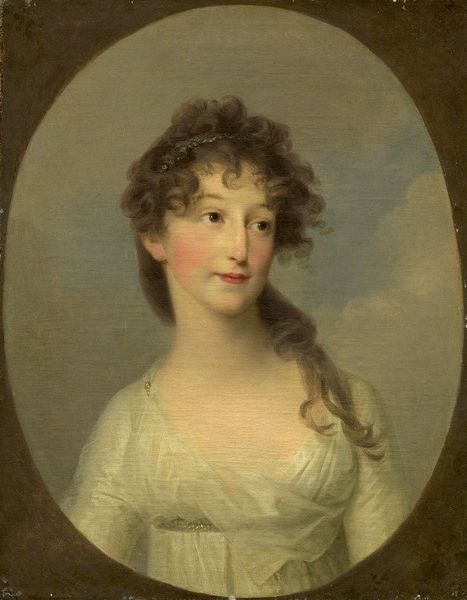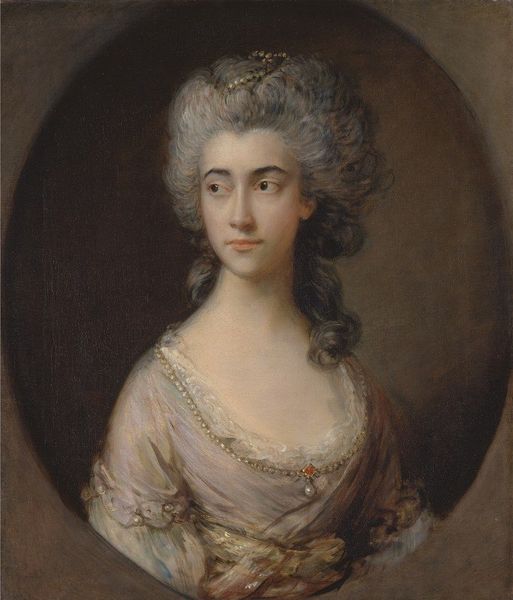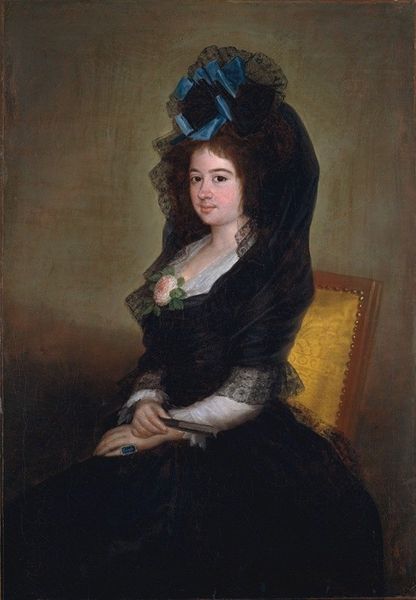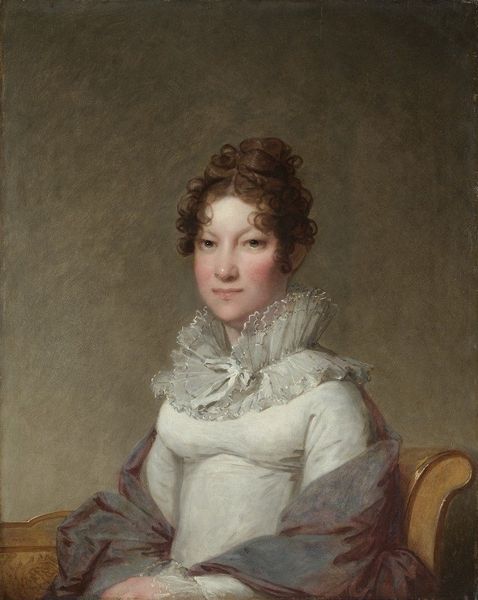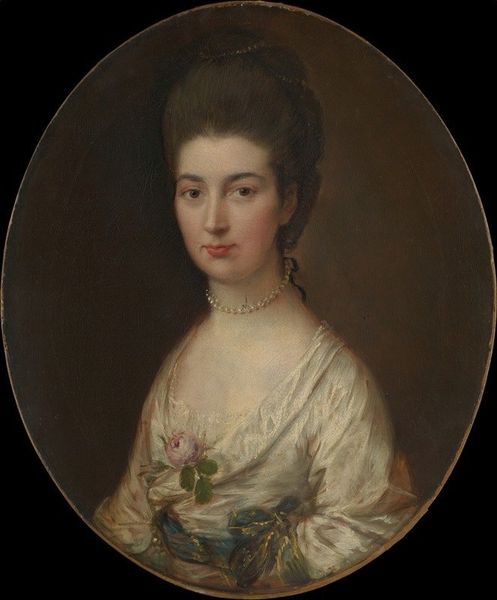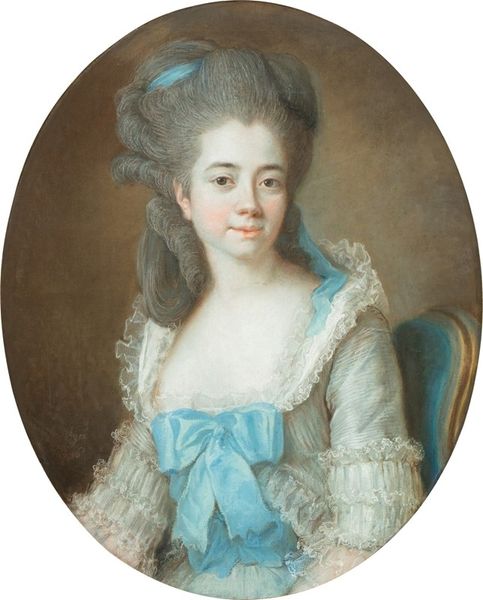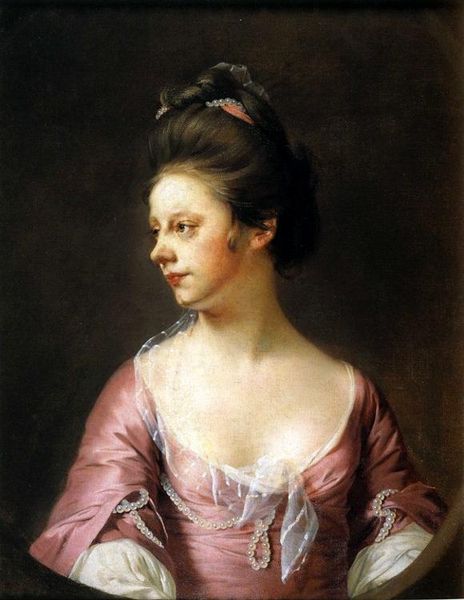
Portrait Of A Woman, Traditionally Identified As Margaret Stuart, Lady Hippisley
0:00
0:00
painting, oil-paint
#
portrait
#
figurative
#
baroque
#
painting
#
oil-paint
#
figuration
#
genre-painting
#
academic-art
Copyright: Public Domain: Artvee
Curator: It's difficult to deny the alluring sentimentality present in this portrait, ostensibly portraying Margaret Stuart, Lady Hippisley. We know it was painted by Pompeo Batoni while he was working in Rome. Editor: Yes, she has a wistful aura about her, doesn't she? There’s something fragile in the turn of her head, the way she seems to almost hide behind the fabric draped around her. It reads like a commentary on the constrained expectations of women during this period. Curator: And those constraints, though restrictive, also provided the frameworks within which women exerted their own agency. We see her adorned in a simple blue dress, offset with luxurious fabric; these details tell us so much about status, identity, and presentation within the complex societal strata. Batoni’s skill lay in rendering such intricacies visible. Editor: I see it a bit differently. While status is certainly at play, the slightly undone hair, the softness of her gaze - these elements feel like a subversive gesture. The pose, at once demure and revealing, invites the viewer to consider the performative nature of femininity. Is this vulnerability genuine, or is it another layer of artifice? Curator: The role of portraiture was, of course, often about constructing and idealizing an image. It reflected the sitter’s desire for posterity, and perhaps something more complicated too - their position within their specific moment in history. What stories do we choose to tell about ourselves, and how does that echo across generations? That's why works like this are essential. Editor: Right, because this isn't just about preserving a likeness, is it? It’s about solidifying a certain narrative, power dynamics and beauty standards, and it reflects very carefully a carefully controlled reality of privilege. And what this offers is a crucial space to critique and redefine these standards today. Curator: Absolutely. By engaging critically with historical portrayals, we create the opportunity to ask new questions about how far we’ve come – or, in some cases, haven't come – regarding representations of identity. Editor: Ultimately, this work speaks to the ever-present negotiation between visibility and the hidden, a dance we’re still performing today.
Comments
No comments
Be the first to comment and join the conversation on the ultimate creative platform.

